Discover 9 hidden attractions, cool sights, and unusual things to do in Rockport (United States). Don't miss out on these must-see attractions: Cape Ann Light Station, Motif Number 1, and Granite Keystone Bridge. Also, be sure to include iartcolony in your itinerary.
Below, you can find the list of the most amazing places you should visit in Rockport (Massachusetts).
Table of Contents
Cape Ann Light Station

Light station in Rockport, Massachusetts. The Cape Ann Light Station on Thacher Island, off Cape Ann in Rockport, Massachusetts, is nationally significant as the last light station to be established under colonial rule and the first station in the United States to mark a navigational hazard rather than a harbor entrance. The current pair of lighthouses were built in 1861. They were both equipped with first order Fresnel lenses, which stood approximately 10 feet high and weighed several tons.
After being decommissioned in the early 1980s, the lens from the south tower was moved to the U.S. Coast Guard Museum at the United States Coast Guard Academy in New London, Connecticut. In 2013 a joint effort by the Cape Ann Museum and the Thacher Island Association brought the lens back to Cape Ann. The first order lens is now on display at the Cape Ann Museum in Gloucester, Massachusetts.
When these lights were built, there was no way to produce a flashing light and, occasionally mariners would confuse one light for another with disastrous results. The only way to create a distinction was to build more than one light. There were two lights at Plymouth and three at Nauset Beach. Gradually as it became possible to create flashes with a revolving lens system, the multiple lights were discontinued, so that while the south light is an active, Coast Guard maintained light, the north tower was discontinued in 1932. It was relighted as a Private Aid to Navigation in 1989. Both lights are now owned by the Town of Rockport and managed by the Thacher Island Association.
The station was added to the National Register of Historic Places as Twin Lights Historic District – Cape Ann Light Station on October 7, 1971, reference number 71000355. In 2001 they became the 9th light station to be recognized as a National Historic Landmark.[1]
Motif Number 1
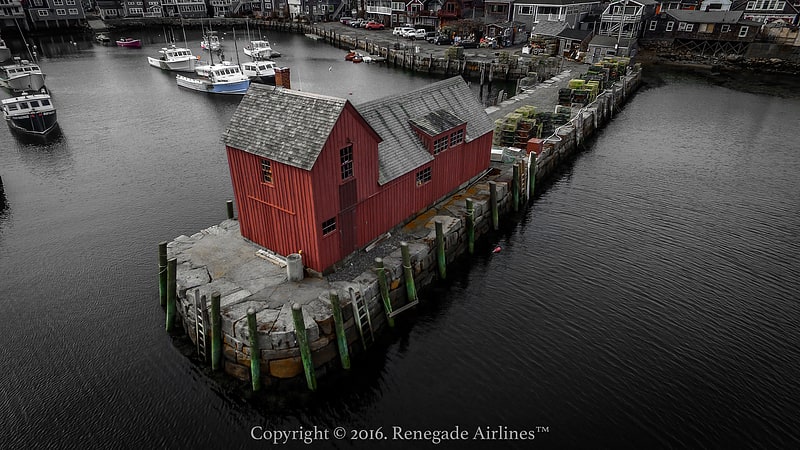
Building in Rockport, Massachusetts. Motif Number 1, located on Bradley Wharf in the harbor town of Rockport, Massachusetts, is a replica of a former fishing shack well known to students of art and art history as "the most often-painted building in America." The original structure was built in 1840 and destroyed in the Blizzard of 1978, but an exact replica was constructed that same year.
Built in the 1840s as Rockport was becoming home to a colony of artists and settlement of fishermen, the shack became a favorite subject of painters due to the composition and lighting of its location as well as being a symbol of New England maritime life. Painter Lester Hornby (1882–1956) is believed to be the first to call the shack "Motif Number 1," a reference to its being the favorite subject of the town's painters, and the name achieved general acceptance. It appeared in the work of Aldro Hibbard and of impressionist Harry Aiken Vincent who arrived in Rockport in 1917.
In the 1930s, painter John Buckley used the shack as his studio. He sold it to the town in 1945, dedicated "In 1945, the town of Rockport purchased the Motif as a monument to Rockporters who had served in the Armed Services." The town, recognizing its iconic value, has taken pains to preserve both its structure and appearance, finding a red paint which appears weather-beaten even when new, and keeping the area clear of overhead wires, traffic signs and advertising.[2]
Address: Bradley Wharf, 01966 Rockport
Granite Keystone Bridge
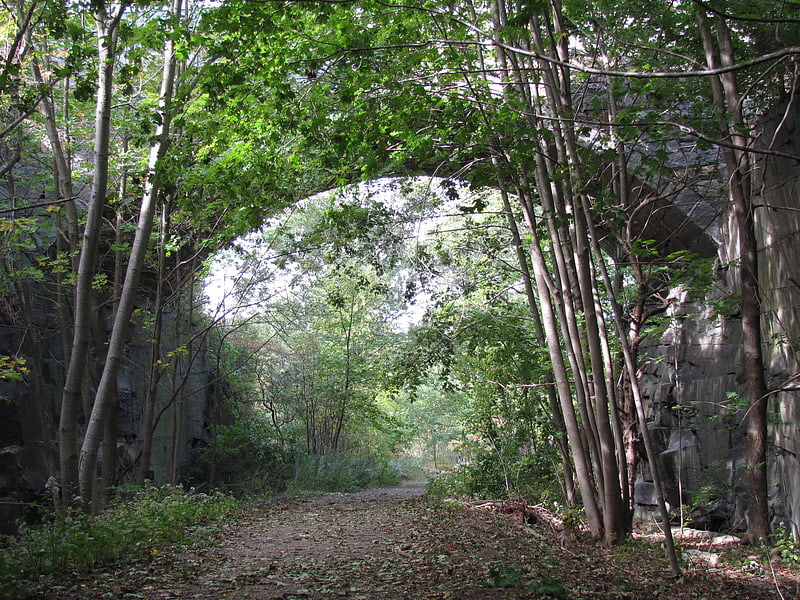
Bridge in Rockport, Massachusetts. The Granite Keystone Bridge is a historic bridge that carries Granite Street over the former railroad that transported granite from Pigeon Hill to Granite Pier in Rockport, Massachusetts. The bridge arch was built in 1872 in eleven weeks. Its single arch spans 65 feet and is 32 feet wide. The bridge was added to the National Register of Historic Places in 1981.[3]
Iartcolony
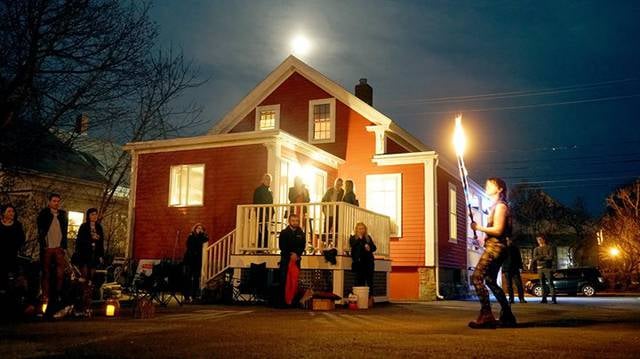
Museum, Art gallery, Shopping
Address: 42 Broadway, 01966-1502 Rockport
Sewall-Scripture House
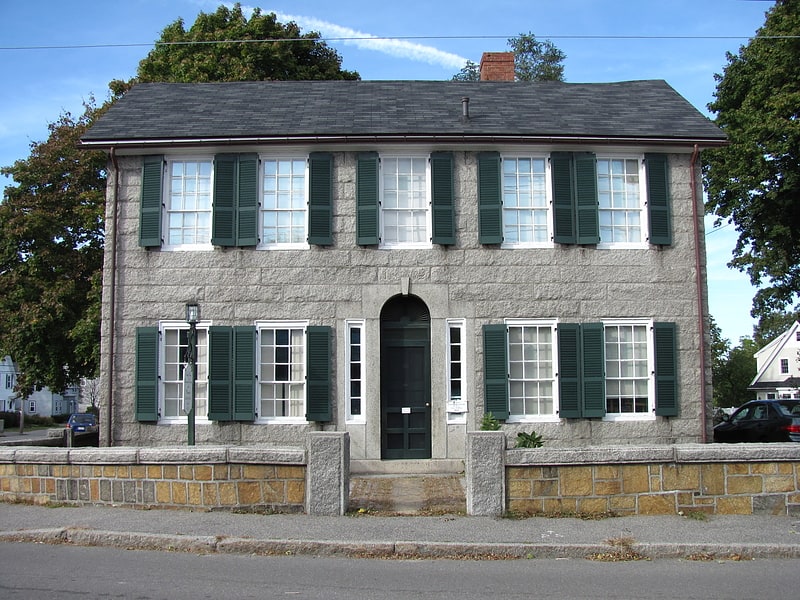
Museum in Rockport, Massachusetts. The Sewall-Scripture House, is a historic house museum in Rockport, Massachusetts that is owned by the Sandy Bay Historical Society. The Sewall Scripture Museum features antiques, period artifacts and items of local history. The Federal style building, the only house in Rockport built out of native granite, was added to the National Register of Historic Places in 1982.[4]
Old Castle
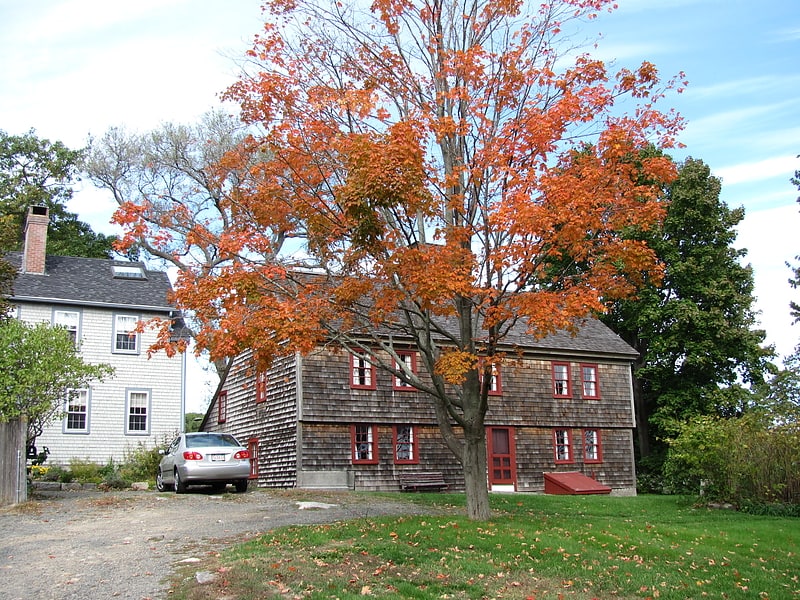
Museum. The Old Castle is a historic First Period house located on Castle Lane in Rockport, Massachusetts. The 2+1⁄2-story wood-frame house was probably built c. 1712 by Jethro Wheeler, in whose family it remained for six generations. It was sold out of the family in 1893 to Henry F. Story, and given to the Pigeon Cove Village Improvement Society in 1929. The house underwent some restoration at that time, and is now open during the summer as a historic house museum, operated by the Sandy Bay Historical Society.
The house was listed on the National Register of Historic Places in 1978.[5]
Gott House
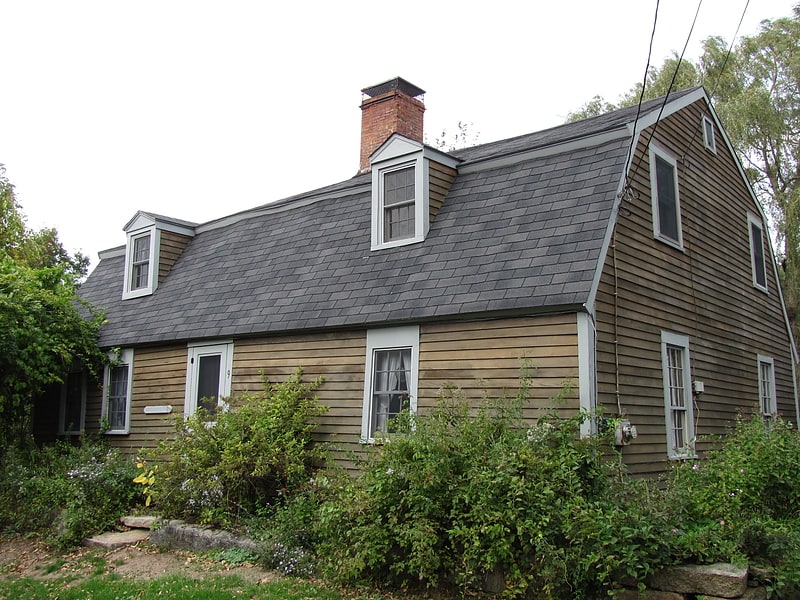
The Gott House is a historic late First Period house in Rockport, Massachusetts. The plank-framed gambrel-roofed cottage was built in 1702, exhibiting the transitional nature of the construction techniques used, and the gambrel roof, which is not a normal First Period feature. It also features 2 dormers that were added some time later. The first part built was the right side and the central chimney; this was extended with the rooms left of the chimney later in the Second Period. The interior retains significant Second Period trim and decoration. The house has never been sold, and has been handed down through the generations to its current occupants.
The house was listed on the National Register of Historic Places in 1990.[6]
Rockport Downtown Main Street Historic District
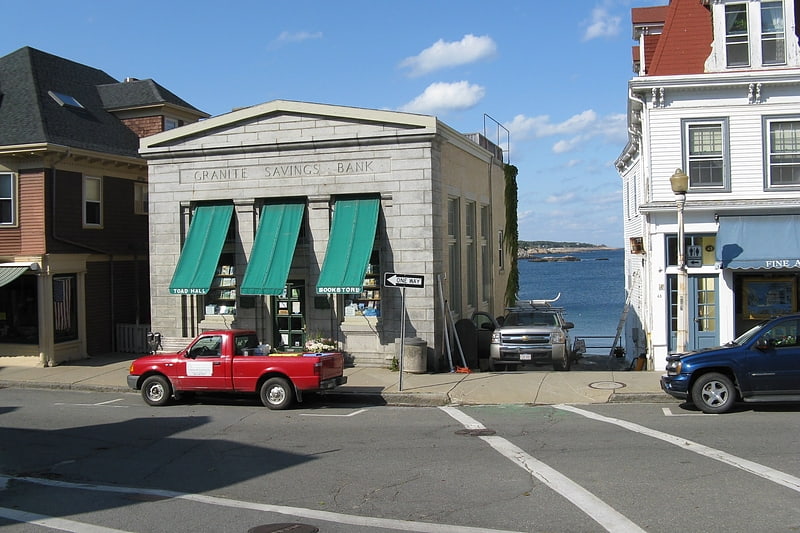
The Rockport Downtown Main Street Historic District encompasses part of the historic center of Rockport, Massachusetts. The district extends along Main Street, from its junction with Beach Street in the west to just east of its junction with School Street. The area is just west of Rockport's noted Bearskin Neck area. Most of the 28 properties in the district are commercial buildings; there are also three churches, a library, and a number of residences. Only a few of these properties front on the side streets adjacent to Main Street; all abut Main Street. The central focal point of the district is the First Congregational Church, built 1803, and the adjacent Federal style Jewett House, a pastor's residence built in 1806. Most of the commercial buildings are modest in scale, and are in a variety of building styles popular in the 19th century.
The district was listed on the National Register of Historic Places in 1976.[7]
Old Garrison House

Building in Rockport, Massachusetts. The Old Garrison House is a First Period house in Rockport, Massachusetts that has been dated through dendrochronology to at least 1711. This house is primarily constructed of tamarack logs. An ell was added onto the rear of the house in the late 18th century, and a shed-like wing was added to the west rear in the 19th century. Later in the 19th century a single story kitchen wing was added onto the ell.
Dating the house through dendrochronology was only able to produce one usable core sample which was extracted from a log to the left-hand end of the building. Efforts to obtain more samples for dates were unsuccessful due to where the logs are placed and their condition. Local histories suggest that the house may in fact be older than attested. Possibilities include the house being built as early as 1675, and at one point belonging to Elizabeth Proctor. The latter of the two is better known today as having been accused in the Salem witch trials. The house was listed on the National Register of Historic Places in 1991.[8]